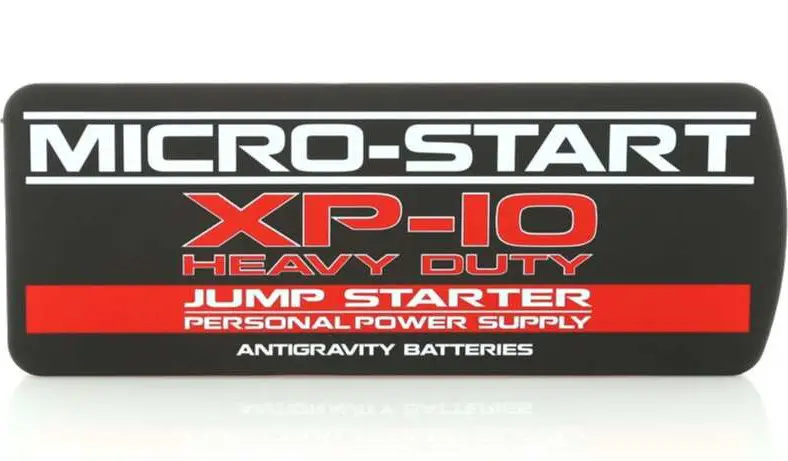Jump-starting a car is a delicate process, which makes many anxious. It would help if you were careful; otherwise, you can get hurt or damage your vehicle.
Dealing with a dead battery on a Toyota Prius adds to the anxiety, especially if it is your first time dealing with it on a hybrid. The process itself isn’t much different than that of a traditional gasoline car, but hybrid cars are built differently.
Our guide simplifies the process for you.
How To Jump-Start A Prius?
When it comes to a Toyota Prius, you go through the jump-starting process as you would with any other gasoline car since it comes equipped with a 12-volt battery.
The Prius, like most other hybrid cars, has two batteries:
- Main battery in the powertrain, which runs along with the gasoline engine or takes over when the gas isn’t used.
- 12-volt battery is tasked to power the electronics of the car.
Unlike most traditional cars, the 12-volt battery in a Prius is located in the trunk. To make it easier for drivers to jump-start the car, Toyota provides a terminal in a fuse box under the car’s hood.
You should have no problem with the process as long as you locate the terminal; this way, you work with the right battery.
If for whatever reason, you are having trouble with the battery in the powertrain, you will need to contact your dealer or mechanic to either fix or recharge it.
Preparing To Jump-Start A Prius
The items you need to jump-start a Prius are the same as any other car. So, you will need jumper cables and an assisting vehicle with a charged battery.
You will also need to locate the hatch for the hood so that you can access the terminal box. You can consult your car’s manual, so you don’t have any issues.
Once you have the hood open, locate the fuse box. It is a rectangular-shaped plastic box, which has a terminal specifically for jump-starting the car. Open the box, and you will have access to the terminal.
Before you start the process, there are some things you need to consider to ensure the safety of you and the cars. These are:
- Line the helper car up with the Prius, so the hoods face each other. This will make it easier for you to connect the jumper cables.
- Make sure the helper car has a healthy battery; there is no damage or leak in it. You should also check the battery of the Prius to ensure the same.
- Use jumper cables that are fully intact and not damaged in any way.
- If you notice the jumper cables are getting hot, stop the process and don’t use them.
- You need to ensure that the jumper cables are connected to the proper terminals. Connecting them to the wrong terminal can cost you a lot of money because you run the risk of burning the vehicle’s inverter. Replacing it would easily cost you a few grand. So, double-check to ensure you’ve connected the cables correctly.
- When connecting the cables, the second or helper car should be off. Prius has a powerful battery, so you should connect the cables to the terminals before starting the jump process. Otherwise, you are put at risk of getting hurt or damaging the car.
- Turn both cars off before you remove the jumper cables. Otherwise, you can damage the electronics of both cars.
Jump-Starting A Prius
Like you would do with any other car, the process starts with attaching the jumper cables.
Step 1: Start by attaching the positive lead to the jump-starting terminal on the Prius. Then connect the other end of the cable to the positive terminal on the help car.
If you are using a Quick-kick unit, then attach it to the positive terminal on that.
Find purchasing options for the best Quick-kick unit online:

Noco GB40 Boost Plus Jump Starter

Antigravity XP-10HD Micro Start Jump Starter
Step 2: Attach the negative cable clip to the negative terminal of the help car or Quick-kick unit. Then, attach the other end of the cable to an unpainted piece of metal of the car away from the terminal and the car’s moving parts.
Step 3: Once you have the cables properly in place, turn on the Quick-kick unit, or the helper car engine. When using a car to provide power, gently rev it and keep the rpm between 2 and 3 for about 5 minutes.
This will provide plenty of juice to the Prius’ battery.
Step 4: After a few minutes of starting the helper car or Quick-kick unit on, spool up the Prius’ hybrid system by turning the switch on.
Step 5: Keep an eye on the indicator panel as you do this for the “Ready” indicator to turn on. This will notify you that the system is on and the battery has power.
Step 6: After the system has started, you can turn both cars off and remove the jumper cables.
Step 7: Start by removing the negative cable from the Prius first, then from the negative terminal of the helper car or Quick-kick unit.
Step 8: Now, do the same for the positive cable.
Step 9: Put the cover of the jump-start terminal. After which, you need to put the fuse box’s cover back on, and you are done.
It is that simple to jump-start a Prius. The whole process should take you around 10 minutes as long as you have all the items required and follow the process as mentioned above.
If this is your first time recharging your Prius’ battery and you are sure that you haven’t misused it in any way, the recharge should last you for some time.
If your car’s battery often needs to be recharged, you need to take it to the dealer or mechanic to see whether you need a new battery.
Why Is My Prius Not Jump-Starting?
If you are facing problems with jump-starting your Prius, you may want to look out for the following before you take it to the mechanic:
Check the jumper cable clips
It would be best to analyze the jumper cable first to make sure that it is in good shape. If you notice rust on the cable clips or chips/cuts on the cable, chances are you have a bad cable. You will need to get new jumper cables.
When you clip the jumper cables on, make sure that they are properly connected. The jaw of the clip should be on the metal side of the terminal it is attached to.

This is especially tricky with Prius because its positive terminal connector in the front hood is thing with one metal side and one plastic side. Besides, each clamp has both sides of the copper teeth, however, often only one side of the clamp is connected to the jumper cable wire.
So you may need to fiddle with the clip a little to ensure it is clamped onto the metal part properly. If not done correctly, all your efforts will go in vain because the battery will not receive electricity.
Fully charge the 12V battery
Jump-starting the battery will not be enough to charge the 12V battery fully. Once you have the battery jumped, you can plug it into the smart charger for a while.
Leave the charger on for about 30 minutes or drive around for a while. This will ensure that the 12-volt battery is in better shape and won’t give out on you while on the road.
Test the battery to see if it needs to be replaced
You can use a multimeter to check the condition of the battery. For this, you need to connect the multimeter to the positive and negative terminals of the battery.
Ideally, you connect it directly to the battery located in the trunk of the Prius. The steps are as follows:
- Before you start, turn the car’s headlights and leave them on for 2 minutes. This will remove any charge that the battery already had.
- Connect the red multimeter to the positive terminal of the battery and the black to negative.
- The multimeter setting should be set to 15-20 volts.
- It should display a voltage on the multimeter, and the reading should be around 12.6 volts. If not, chances are you have a poor battery.
- Start the car and check the reading on the multimeter. It should be over 10; if it drops down to 5 or below, the battery is in poor condition and needs to be replaced.
When Should You Change A 12-Volt Battery?
Unfortunately, batteries have a certain lifespan, and the more poorly you treat it, the shorter the life. On average, a 12-volt battery should last about seven years. But how well you maintain it plays a vital role.
You should always be on the lookout for signs of wear and tear in the battery. Some symptoms to look for are:

Hybrid cars like Prius don’t have an alternator, so it relies heavily on the HV battery to charge. A bad 12-volt battery puts more pressure on the HV battery.
Therefore, you must pay attention to signs so you can resolve issues with the 12-volt battery. Otherwise, you will end up having problems with the HV battery, fixing it is costly.
Conclusion
There is no need to be flustered when you run into battery issues with your Prius. You can jump-start it as you would any other car. Just follow our guide, and you should have the vehicle running again in only 10 minutes. Well, that is as long as there are no issues with the battery.
Read more: Noco GBX45 vs. GBX55 vs. GBX75: The All-New NOCO Boost X Series Review 2021
